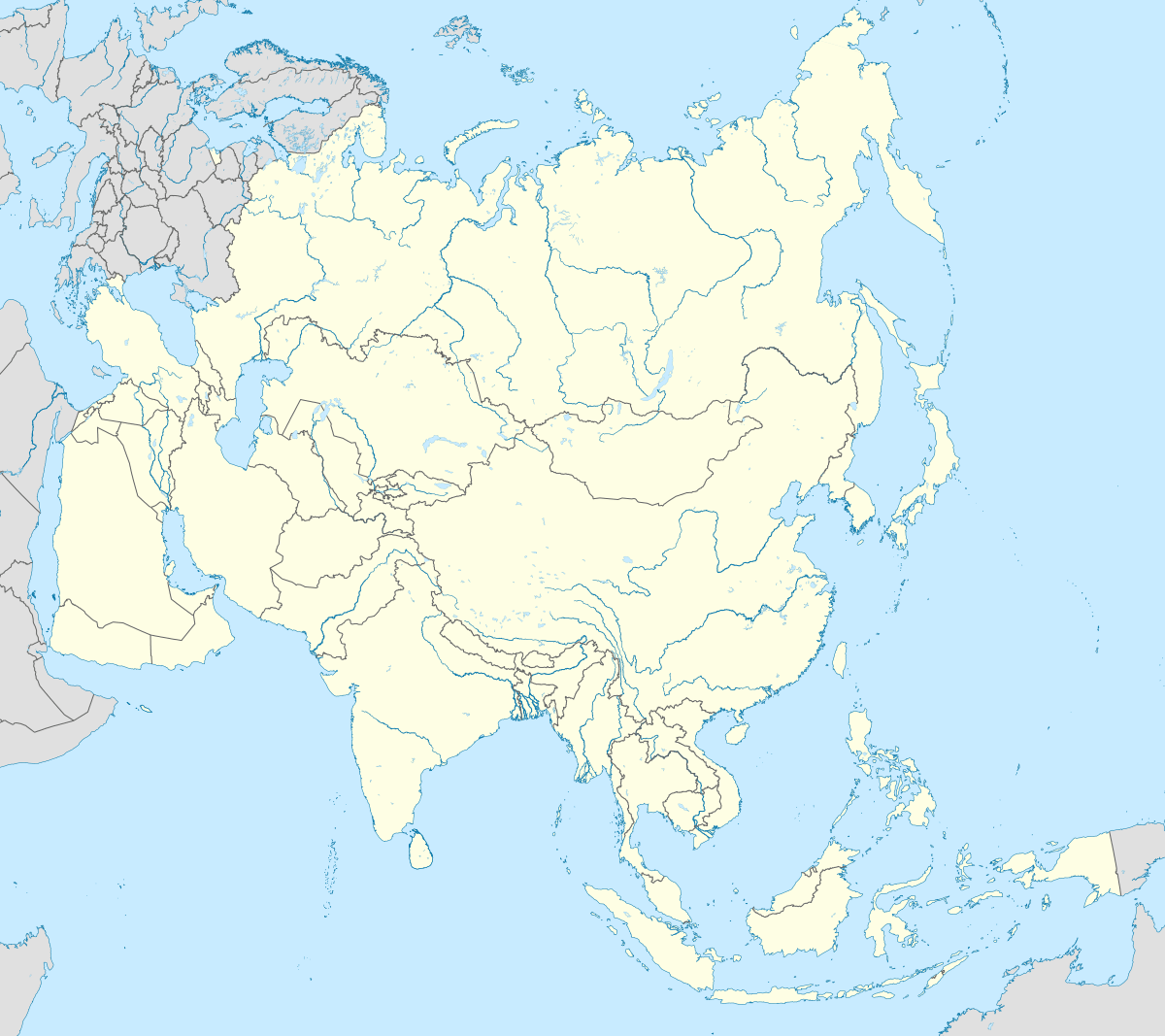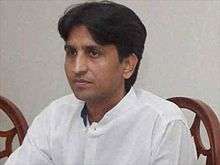Pilkhuwa
Pilkhuwa is a town and a municipal board in Hapur district in the Indian state of Uttar Pradesh. It is famous for its textile products and handloom industry.
Pilkhuwa | |
|---|---|
city | |
 Pilkhuwa Location in Uttar Pradesh, India  Pilkhuwa Pilkhuwa (India)  Pilkhuwa Pilkhuwa (Asia) | |
| Coordinates: 28.711969°N 77.654457°E | |
| Country | India |
| State | Uttar Pradesh |
| District | Hapur |
| Population (2011)[1] | |
| • Total | 83,736 |
| Language | |
| • Official | Hindi[2] |
| • Additional official | Urdu[2] |
| Time zone | UTC+5:30 (IST) |
| PIN | 245304 |
| Vehicle registration | UP-37 (hapur) |
Originally founded as a village, Pilkhuwa has by now grown to the size of a town. It is located on National Highway-24, which connects the National Capital Territory of Delhi to Lucknow, the capital city of Uttar Pradesh.
History
In the 12th century A.D., the city of Delhi was ruled by the Rajput King Raja Anangpal Singh Tomar. The etymology of "Pilkhuwa" lies in the story of an elephant named "Pil", that disappeared from Delhi state, after which the king sent his son to find it. When the search team made a stop at the village of Pilkhuwa, people gathered around them and began saying "Pil-Khuwa", meaning "Pil is lost".
It was in the year 1235 that the village of Pilkhuwa was established by the Tomar Kings. However, in the 14th century, when the Tomar Kings were defeated by the Mughals, the Rajput population of Pilkhuwa was affected and they converted to Islam. Until 1976, Pilkhuwa fell into the Meerut district. In 1976, on the anniversary of Jawaharlal Nehru's birth, the then-chief minister N. D. Tiwari declared Ghaziabad as a new district. Later on, Ghaziabad was divided into two districts as Ghaziabad and Panchsheel Nagar by Bahujan Samaj Party chief minister Mayawati on 28 September 2011, and Pilkhuwa became part of Panchsheel Nagar. At the time, Panchsheel Nagar was the newly-given name to the city of Hapur by Mayawati; local people were unhappy about the name change, however. Due to political clashes between the Samajwadi Party and Bahujan Samaj Party, the subsequent chief minister Akhilesh Yadav changed the district name to Hapur on 23 July 2012, retaining the original name. Finally, Pilkhuwa became part of Hapur district.
Demographics
As of 2011 Indian Census, Pilkhuwa had a total population of 83,736, of which 44,226 were males and 39,510 were females. Population within the age group of 0 to 6 years was 12,468. The total number of literates in Pilkhuwa was 55,936, which constituted 66.8% of the population with male literacy of 73.3% and female literacy of 59.5%. The effective literacy rate of 7+ population of Pilkhuwa was 78.5%, of which male literacy rate was 86.5% and female literacy rate was 69.6%. The Scheduled Castes population was 14,370. Pilkhuwa had 13746 households in 2011.[1]
Economy
Pilkhuwa is notable for its handloom cotton textiles and exotic printing on khadi and handloom fabrics.[3] There were 120 medium scale industries, 1400 power looms and 3 niwar factories in Pilkhuwa in 1991. 7000 persons employed in textile production, 2000 in cloth sheet washing, 500 in pressing machines, 500 in dyeing, 100 in kundis and 200 in stamping and design. Most of the handloom cloths manufactured in Pilkhuwa is supplied to Meerut apart from centres in other parts of India and abroad.[4]
Educational institutes
- Raj Kumar Goel Engineering College
- Saraswati Medical College
Notable persons

- Kumar Vishwas
- Manish Sisodia
- Vagish dinkar
- Gaurav Bansal
References
- "Census of India: Pilkhuwa". www.censusindia.gov.in. Retrieved 9 October 2019.
- "52nd REPORT OF THE COMMISSIONER FOR LINGUISTIC MINORITIES IN INDIA" (PDF). nclm.nic.in. Ministry of Minority Affairs. Archived from the original (PDF) on 25 May 2017. Retrieved 23 May 2019.
- Singh, Braj Bhushan; Singh, H. P.; India), M. M. H. College (Ghāziabād (1988). Area planning: a strategy for eradication of poverty. Sharad Book Agency. p. 172.
- Kumar, Naresh (1991). Geography of Transportation: Commodity Flows and Human Interactions in Meerut City. Concept Publishing Company. p. 96. ISBN 978-81-7022-332-0. Retrieved 13 February 2020.